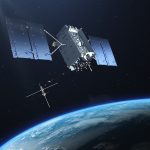Raytheon Intelligence & Space delivers 3,000th GPS Receiver
Raytheon Intelligence & Space delivered its 3,000th Miniaturized Airborne GPS Receiver (MAGR) 2000-S24 system to the U.S. Air Force recently. The MAGR2K is a secure, resilient GPS receiver that enables the warfighter to navigate the battlespace with protection against interference and jamming.
By Inside GNSS













